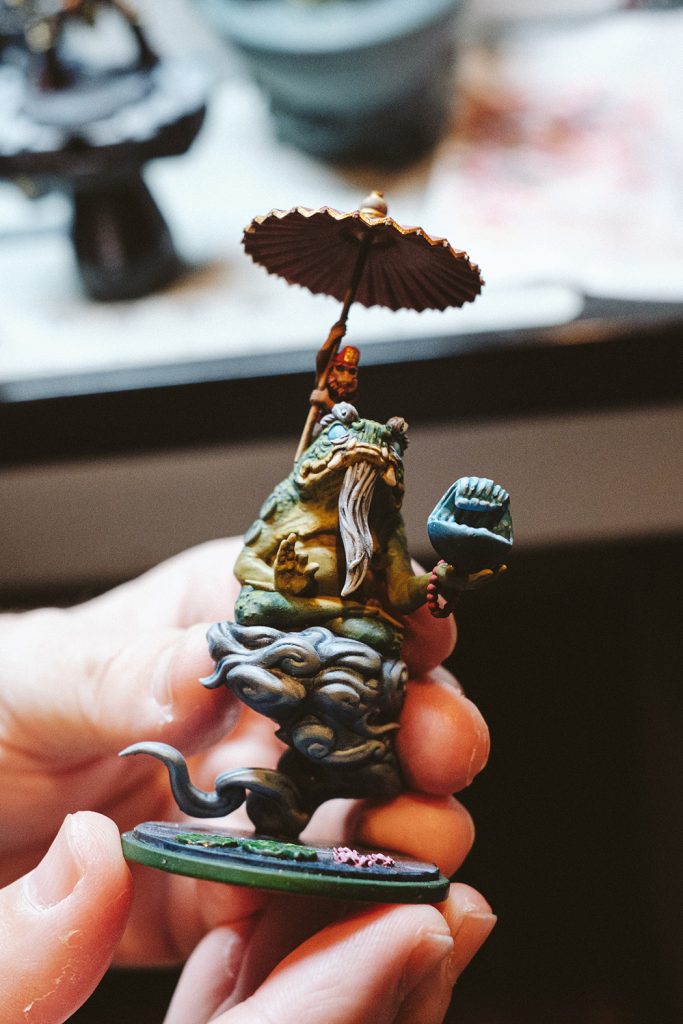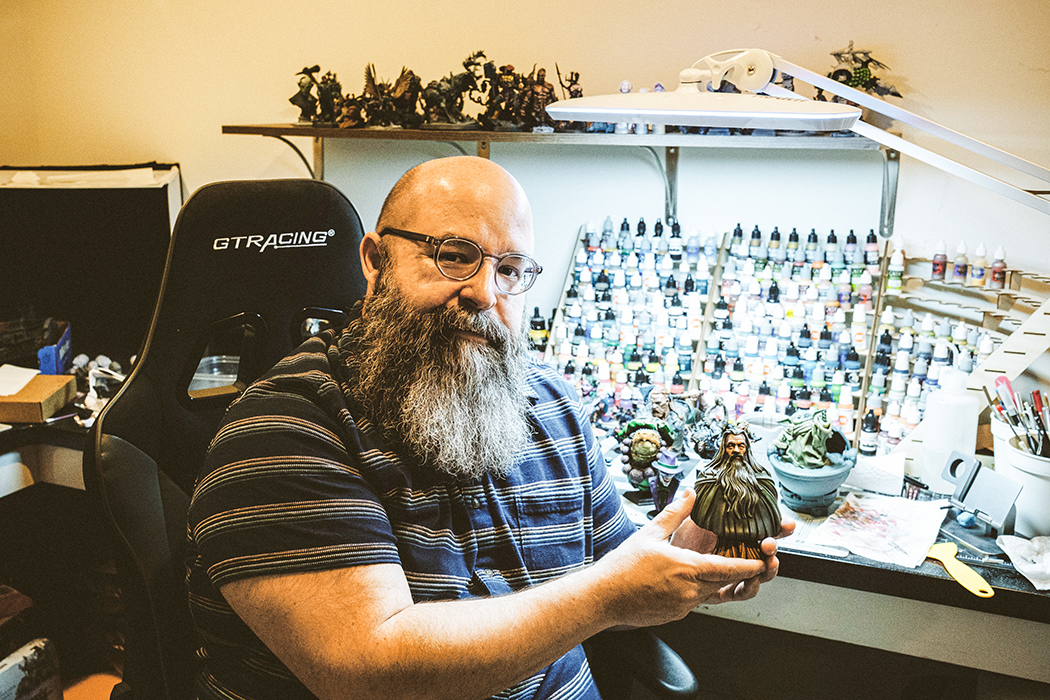Artists have been creating and decorating miniature models for hundreds—if not thousands—of years. But miniatures have exploded in the past half decade with the growing availability of 3-D printers and virtual gathering spaces for enthusiasts. For example, Warhammer, one of the world’s largest tabletop gaming franchises, has drawn an Instagram community of miniature enthusiasts and painters nearly 400,000 members strong.
Charlottesville resident Robert Myers stumbled on miniature painting early during the COVID-19 pandemic, the ideal time to take up a painstaking hobby requiring skill and patience. A working artist who’s dabbled in various media, Myers quickly found himself drawn to the intricacies of miniatures.

“I had just had knee replacement surgery and was laid up and looking for something to do. I got into the rabbit hole on YouTube,” Myers says. “I always liked building models, and for me, it’s the aesthetic. I liked the way everything looked and wanted to apply the principles of 2-D painting to 3-D objects.”
Most folks who charge into miniature painting are tabletop gamers. With their resin-packed 3-D printers at the ready, the self-styled nerds build their own tiny figures for deployment on the fantasy battlefield.
Myers doesn’t play tabletop games. But he was drawn to comic book illustration in eighth grade and began studying art in high school. He joined the Navy afterward and bounced around jobs, bartending and the like. In 2010, he went to art school, focusing on figure drawing, oil painting, sculpting, and other media. All told, he’d had nearly a decade of formal art schooling.
Since going pro, Myers has done some commission work, but it wasn’t until he found miniature painting that his passion was finally piqued. He still struggles to make ends meet selling finished models under his Red Right Hand Miniatures brand, but he’s hopeful about the future.
“Everything artistic sounds corny, but the process for me is finding inspiration in the blank canvas of the miniature, the figure itself,” Myers says. “I ask myself, ‘how do I expand on this?’”
Myers and other miniature painters typically start with an existing 3-D design, print the piece using their resin of choice, then begin their creative process through paint application—priming, layering, creating lighting and transition effects.
“If you’re going to paint a still life, like a bowl of fruit, you might think about whether you want to put your grapes in front or behind,” Myers says. “With miniatures, that’s decided for you. But there are so many techniques you can use to expand on it.”
At some point, Myers might also like to move into the business of miniature sculpture design. With the way the hobby’s growing, he figures it’s an artistic pursuit with serious upside.
“With COVID and people having so much time, lots of people got involved in the hobby,” he says. “It’s an amazing, supportive community. It’s an open and progressive community. And I think more people are starting to realize there isn’t this stigma for being into it.”
Formally trained artist Robert Myers finally found his niche in painting miniatures.
